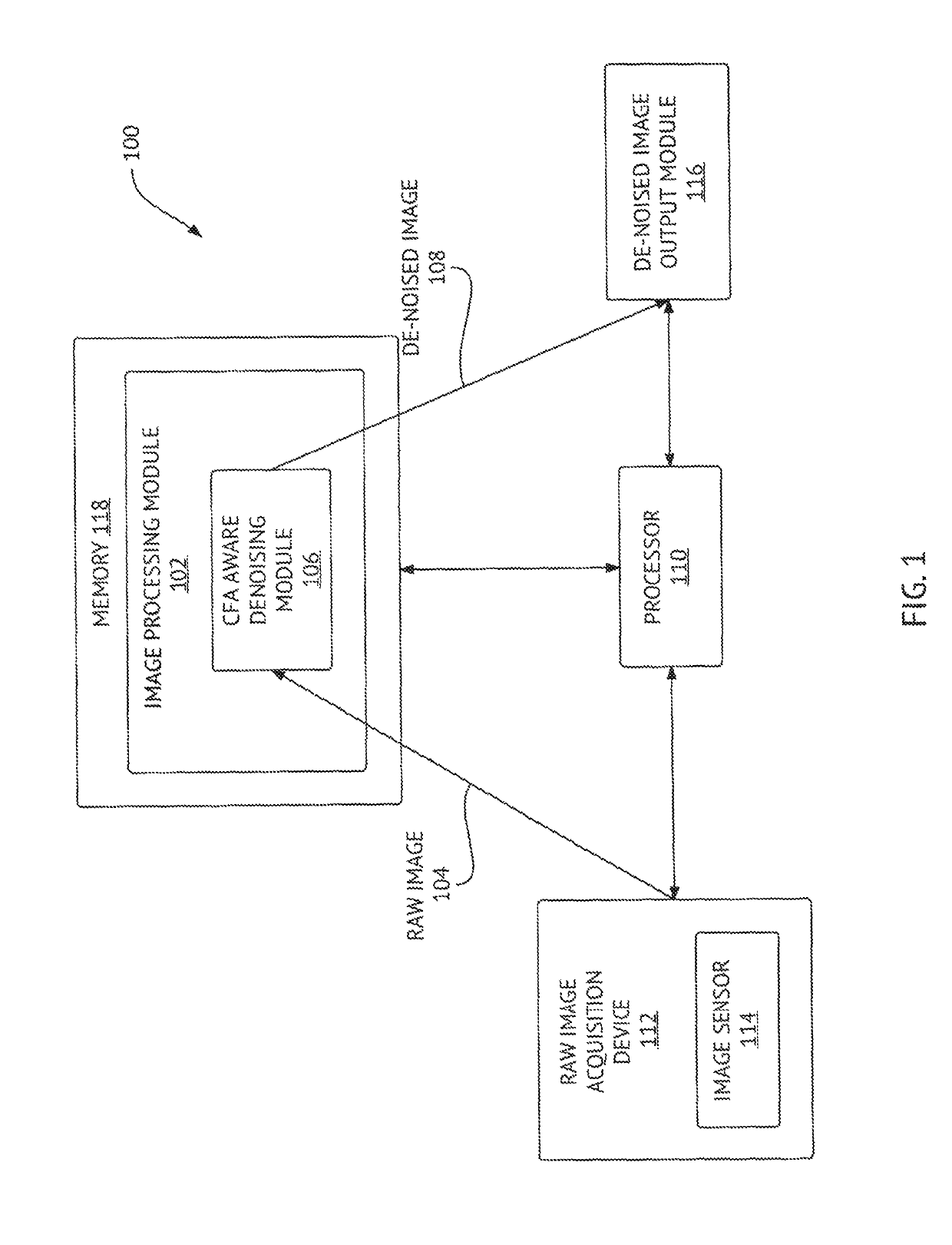Method and system for edge denoising of a digital image
a digital image and edge denoising technology, applied in image data processing, instruments, computing, etc., can solve the problems of reducing the quality of digital images, reducing the noise, or denoising, of digital images still, and achieving the effect of avoiding at least some disadvantages
- Summary
- Abstract
- Description
- Claims
- Application Information
AI Technical Summary
Benefits of technology
Problems solved by technology
Method used
Image
Examples
case b
[0193] Anscombe transform is not used and input image normalized in [0, 1].
3.3.1 Preferred Ranges
[0194]In some preferred embodiments a value of M is chosen from a range of about 1 to 2. Provided an Anscombe transform has been applied to the raw image 104 (Case A), a value of p is chosen from a range of 0.003 to 0.03; otherwise (Case B) a value of p is chosen from a range of 0.0001 to 0.001.
3.3.2 Other Preferred Ranges
[0195]In other preferred embodiments a value of M is chosen from a range of about 1 to 2. Provided an Anscombe transform has been applied to the raw image 104 (Case A), a value of p is chosen from a range of 0.001 to 0.05; otherwise (Case B) a value of p is chosen from a range of 0.0001 to 0.003.
3.3.3 Still Other Preferred Ranges
[0196]In other preferred embodiments a value of M is chosen from a range of about 1 to 4. Provided an Anscombe transform has been applied to the raw image 104 (Case A), a value of p is chosen from a range of 0.001 to 0.1; otherwise (Case B) a va...
case 1
[0325] The pixel p is on a strong vertical edge, with black pixels on the left, on a large area, and white pixels on the right, on a large area. There is no noise.
[0326]As an example, the intensities in a neighborhood of pixel p, in case 1, could be (with value of pixel p in bold):
[0327] [0000.51110000.51110000.51110000.51110000.51110000.51110000.5111]
[0328]In case 1, the angle to the normal vector to the edge is estimated robustly as 0 at pixel p and at its neighboring pixels, such that the variability α(p) is 0. The hyperbolic tangent (tan h) in sig(x,μ) will be close to −1, such that sig(α, μa) will be close to 0.
[0329]m(p) is 0 as well. Consider that m(p) is the minimum of the absolute values of the derivatives of the pixel intensities along many different directions. Here the derivative along the y-axis is 0, so m(p) is 0. And therefore (1−sig(m(p), μg)) will be close to 1. As a result, the blending weight wb(p) will be close to 1.
case 2
[0330] The pixel p is on a large, mostly flat, area, pixel p is black and all pixels in a large neighborhood are black as well. There is a little noise.
[0331]As an example, the intensities in a neighborhood of pixel p, in case 2, could be (with value of pixel p in bold):
[0332] [0.0500.040.0100000.01000000.0100.0300.0100.010000.030000.020.010.040.03000.020000.040000000.030.020.020.04]
[0333]In case 2, it is impossible to estimate robustly any normal vector to the edge at all. Instead, the angle that is estimated for the normal vector to the edge is random, since there isn't any edge but only noisy values. So the variability α(p) will be high, and therefore (1−sig(α, μa)) will be close to 0. As a result, wb(p) will be close to 0.
PUM
 Login to View More
Login to View More Abstract
Description
Claims
Application Information
 Login to View More
Login to View More - R&D
- Intellectual Property
- Life Sciences
- Materials
- Tech Scout
- Unparalleled Data Quality
- Higher Quality Content
- 60% Fewer Hallucinations
Browse by: Latest US Patents, China's latest patents, Technical Efficacy Thesaurus, Application Domain, Technology Topic, Popular Technical Reports.
© 2025 PatSnap. All rights reserved.Legal|Privacy policy|Modern Slavery Act Transparency Statement|Sitemap|About US| Contact US: help@patsnap.com



